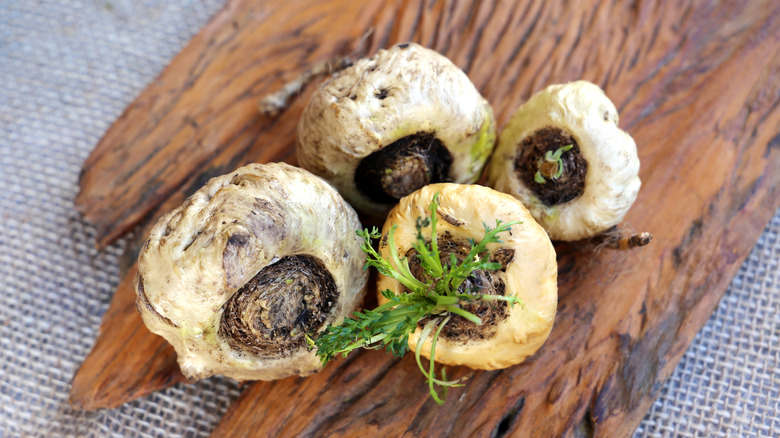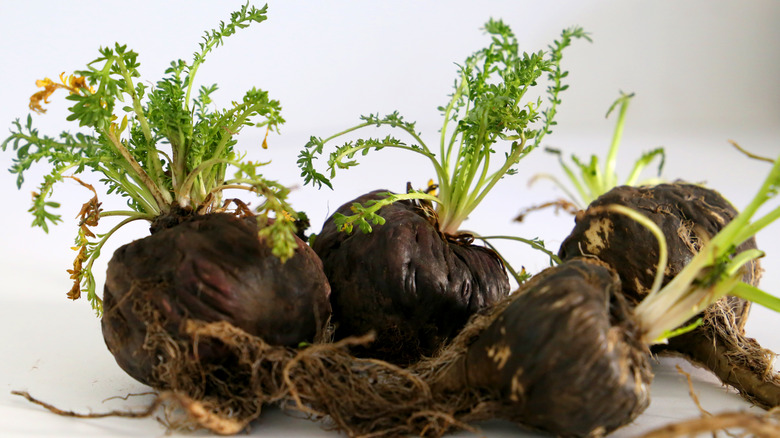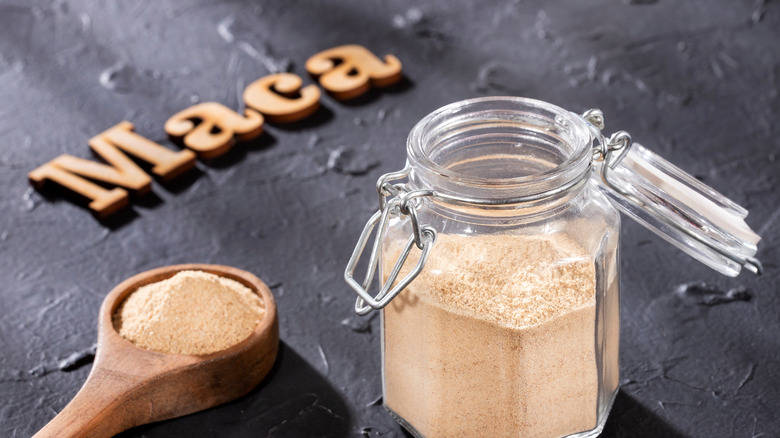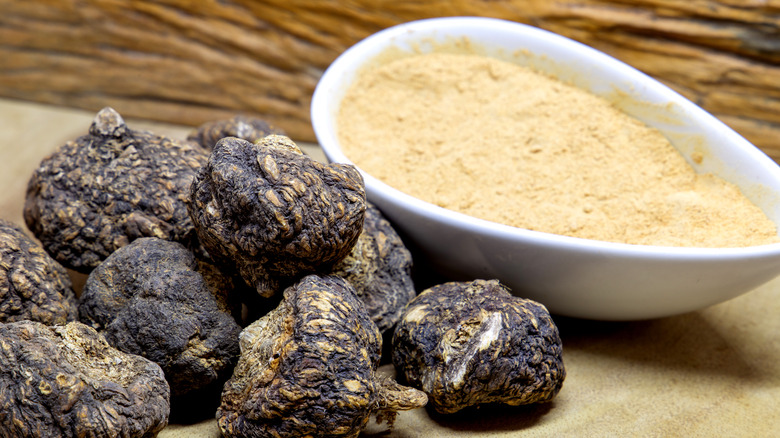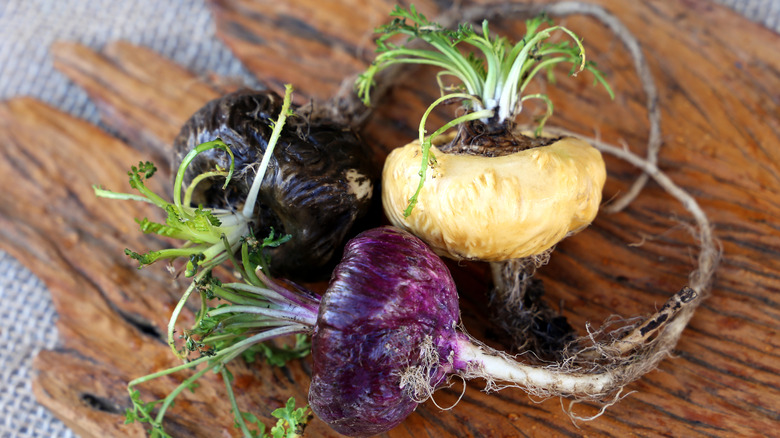What Is Maca And Is It Nutritious?
We may receive a commission on purchases made from links.
You've probably heard maca thrown around a lot by healthy trendsetters. It may sound like just another powder supplement, but the truth is that what we're discussing here is far more than a simple powder. Maca, better known by the scientific name of Lepidium meyenii or the trendy-sounding name Peruvian ginseng (via Cultivariable), is a unique root vegetable with an enormous variety of health benefits. These benefits range from the always welcome boosting of energy to the more intimate side of physical improvements.
But what exactly is maca root? Is it an expensive health supplement, or can it be found in your local grocery store? How exactly can you include it in your diet? Perhaps after reading this article, you may find yourself willing to try out this exotic plant for yourself and see the wide variety of health benefits it may bring to you.
What is maca?
Maca is grown commonly in Peru, or more accurately, the high altitudes of the Andes Mountains (via Cultivariable). Being a cruciferous vegetable, you don't have to look too hard to find maca's cousins: broccoli, cauliflower, cabbage, and kale. Peruvians have long used maca not just as a culinary ingredient but also for medicinal purposes.
At first glance, maca resembles a turnip or a radish in shape, but they differ in both variety and flavor. According to The Maca Experts, there are three distinct types of maca root available. Red maca root is described as having a sweet, subtle caramel flavor; yellow maca root has a tangy flavor profile; and black maca root is said to be not as sweet as red maca, but not as tangy as yellow maca. Because of its earthy and somewhat sweet flavors, some people dislike the taste of maca root and may want to try to mask the taste. Some folks on Reddit have suggested using peanut butter or mixing maca into a smoothie or protein shake to help ease their taste buds.
Cooking with maca
While it's natural to worry that you may have to make substantial changes to your diet to incorporate new foods, maca can easily be added to your regular diet in many ways. Powdered maca is made from gelatinized maca — raw maca root that has been cooked via boiling or steam to remove any mold, break down hard-to-digest starches, and enhance its flavor (via The Maca Experts). So what are some ways you can add maca powder into your diet?
Natural food blogs such as Simply Quinoa and HealWithFood suggest a few simple ideas for using maca powder in recipes, such as mixing it into soups, homemade dough, granolas, or smoothies. And if you're on a raw food diet and craving something sweet like truffles or hot chocolate, the latter outlet recommends combining the natural earthiness of maca powder and the sweetness of cocoa powder.
SPICEography gives a few "do's" and "do not's" on the proper storage and consumption of maca powder. It is recommended to add maca powder to as many other foods as you like. However, they suggest beginning in small amounts, as first-timer consumers of the root may find themselves with "internal distress" if consuming a large amount all at once. It is also suggested to properly store powdered maca in a resealable bag away from moisture or direct sunlight or in a freezer to increase maca's long shelf life (between 2 years to an indefinite amount of time).
Is maca nutritious?
As we said earlier, maca is said to be packed with all sorts of health benefits, with each variety of root offering some form of nutritional and/or physical benefit. Ongoing scientific research supports several of these benefits, such as a 2015 study supporting maca helping to reduce sexual dysfunction in postmenopausal women, per a study in Evidence-Based Complementary and Alternative Medicine. Elsewhere, and a 2016 study in Maturitas demonstrated that maca may support fertility in men, though research is still ongoing.
Via Little Bird Organics, yellow maca is said to assist with energy and mood, reduce stress-induced inflammation, and enhance metabolic function. Red maca is said to help improve anxiety, circulatory issues, regulation, and surprisingly, may support bone health, per a 2010 mouse study in Research in Complementary Medicine. Black maca is said to be known as the "men's maca" (via Assuaged), as it may help enhance libido, enhance athletic performance, and combat hair loss. Maca also contains high levels of flavonolignans and glucosinolates, which are said to help prevent certain types cancer, including breast cancer (via a 2015 Journal of Agricultural and Food Chemistry study on the subject).
Where can you buy maca?
If you're curious to try some maca on your own, you probably may worry about having to pay an extravagant fee for such a superfood. Fortunately, maca is surprisingly pretty common in its powdered form and can be purchased from any drugstore, such as CVS or Walgreens. It's not terribly expensive, with the price range being around $10-$20 — a bag of organic maca powder can be purchased for only $13.99 (via Amazon), or you can spend$106.00 if you're willing to buy in bulk (via Nutstop)
If you're wary of buying maca in this form, other web stores like The Maca Team sell it in capsules, chips, and liquid form. You can use the site to order and review these products or just supplement your health food knowledge. So the next time you're in the mood to add a little something to your dish, go ahead and make it maca.
